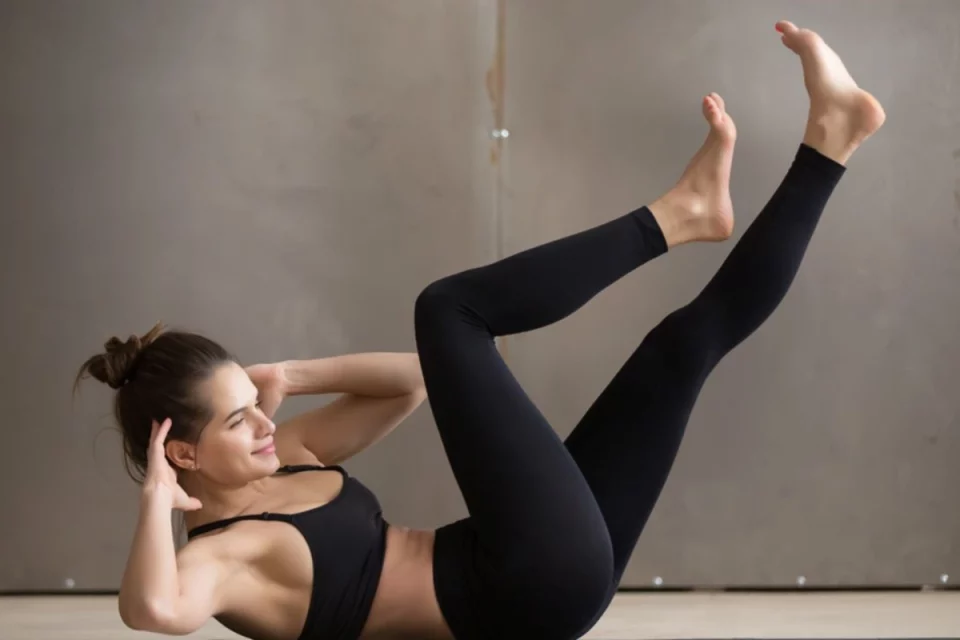We understand that not everyone wants to go “all-out” with high-intensity workouts or pound on the pavement for hours.
That’s why we’re here to introduce you to the top five low-impact workouts that will help you reach your weight loss and muscle toning goals while being gentle on your joints and the environment.
So, get ready to embrace a kinder, more effective approach to fitness that will leave you feeling empowered, energized, and excited to embark on this transformative journey.
Let’s dive in and unlock the secrets of these phenomenal low-impact exercises together!
Table of Contents
#1 Walking
Walking is a fantastic exercise that offers many benefits, both for weight loss and muscle toning.
Benefits of walking for weight loss and muscle toning:
Burn Calories and Melt Away Fat
Regular brisk walks can torch calories, helping you create a calorie deficit obligatory for weight loss.
It’s a natural fat-burning activity that is gentle on your joints, making it suitable for people of all fitness levels and ages.
Enhance Muscle Tone
Contrary to popular belief, walking is not just a cardio workout; it can also help you tone and strengthen your muscles.
While walking, your leg muscles, including the calves, quadriceps, hamstrings, and glutes, are continuously engaged.
Over time, this consistent muscle activation leads to improved muscle tone and definition.
For an extra challenge, consider incorporating hills or stairs into your walking routine, further targeting and sculpting your lower body.
Boost Energy and Mood
Walking outdoors, especially in natural surroundings, can do wonders for your mental well-being.
Walking releases endorphins, the “feel-good” hormones, which can elevate your mood, enhance mental clarity, and even alleviate symptoms of depression.
Improve Heart Health
Regular walking can lower your blood pressure, reduce bad cholesterol, and increase good cholesterol levels.
These positive changes contribute to a healthier heart and a decreased risk of cardiovascular diseases.
Achieve Sustainable Results
One of the most remarkable aspects of walking is its sustainability.
Unlike crash diets or intense workout routines that can be challenging to maintain long-term, walking is a lifelong activity that you can easily incorporate into your daily routine.
Whether it’s taking a brisk walk during your lunch break, walking to run errands, or enjoying an evening stroll with friends or family, the versatility of walking makes it a practical choice for sustained weight loss and muscle toning.
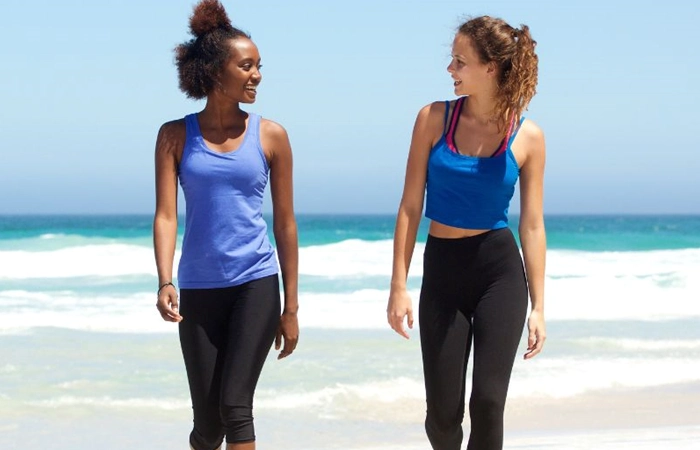
Tips for maximizing the effectiveness of walking workouts
Start with the right mindset
Approach your walking workouts with positivity and enthusiasm.
Set clear goals
Determine what you want to achieve through your walking workouts. Start with realistic goals and gradually challenge yourself as you progress.
Warm up and cool down
Spend a few minutes doing dynamic stretches or gentle movements to prepare your body for the exercise.
Similarly, when you finish your walk, allocate time for a cool-down period with some light stretches to prevent muscle soreness and promote recovery.
Maintain good posture
Stand tall, keep your head up, and gaze forward. Engage your core by pulling your belly toward your spine and swinging your arms naturally.
Vary your intensity
To maximize the effectiveness of your walking workouts, incorporate intervals of varying intensity.
Add bursts of brisk walking or short sprints into your routine to challenge your cardiovascular system and increase calorie burn.
Mixing up your pace will also keep your workouts interesting and help you avoid plateauing.
Focus on form and technique
Pay attention to your walking form and technique. Take smooth and purposeful strides, landing on your heels and rolling through to your toes.
Refrain from shuffling or dragging your feet, as this can cause unnecessary strain on your joints. Swing your arms naturally, and maintain a relaxed yet engaged posture throughout your walk.
Incorporate hills and inclines
Include hills or inclines in your walking route. Walking uphill engages different muscle groups and increases the intensity of your workout.
It helps strengthen your legs, glutes, and core and boosts your cardiovascular endurance. Embrace the challenge and enjoy the extra benefits of tackling those inclines.
Track your progress
Keep a record of your walking workouts to track your progress and celebrate your achievements.
Seeing your progress on paper or in an app can be highly motivating and encourage you to keep pushing yourself.
Stay hydrated and nourished
Remember to stay hydrated before, during, and after your walking workouts.
Drink plenty of water to maintain optimal performance and prevent dehydration.
Additionally, fuel your body with a balanced diet that includes nutritious foods to provide the energy and nutrients required for an effective workout.
Make it enjoyable
Listen to upbeat music, audiobooks, or podcasts that inspire you. Join a group or walk with a friend to add social interaction and accountability.
Choose scenic routes or explore new areas to keep your walks interesting and captivating. By making your workouts enjoyable, you’ll be more likely to stick with them in the long run.
#2 Swimming
Swimming puts minimal stress on your joints and muscles. By engaging multiple muscle groups simultaneously, swimming provides a comprehensive full-body workout.
Whether kicking your legs, stroking your arms, or maintaining balance in the water, every movement contributes to toning your muscles and burning calories.
Example:
Let’s say you are a beginner swimmer, and your goal is to swim a continuous 500-meter freestyle.
Start by working on your stroke technique, body positioning, and breathing.
Gradually increase your distance each week, starting with shorter intervals and building up to longer swims.
Set mini-goals along the way, such as swimming 50 meters without stopping, then 100 meters, and so on.
By consistently practicing and focusing on technique, you’ll eventually achieve your goal of swimming 500 meters without a break.
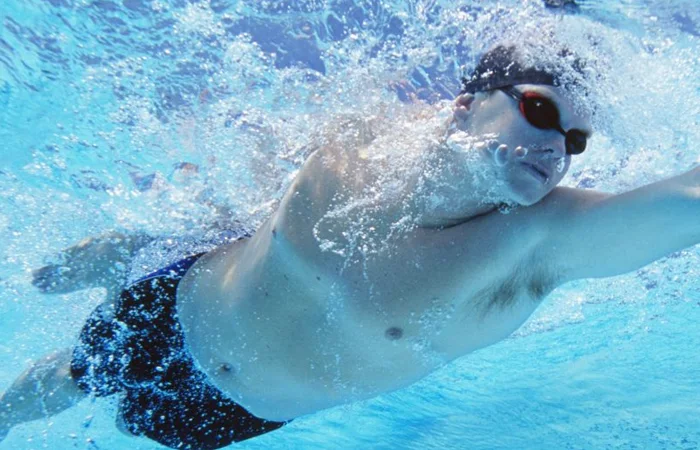
#3 Cycling
Cycling helps create a calorie deficit, which is necessary for shedding unwanted pounds. During a cycling session, your body burns calories as it works to propel the bike forward.
The number of burned calories depends on various factors, such as your weight, intensity, and duration of the ride.
Cycling also helps tone the lower body, particularly the muscles in the legs and glutes.
Pedaling engages major muscle groups like the quadriceps, hamstrings, calves, and gluteal muscles.
These muscles are continuously contracted and relaxed during the cycling motion, leading to their strengthening and toning over time.
To maximize the toning effects, you can vary your cycling routine by incorporating different terrains, such as uphill climbs or interval training.
Uphill cycling requires more effort, activating and targeting specific muscle groups, resulting in increased muscle definition and toning.
Cycling puts less stress on the joints compared to activities like running.
This makes it an ideal option for individuals with joint issues or those who are overweight, as it reduces the risk of injury.
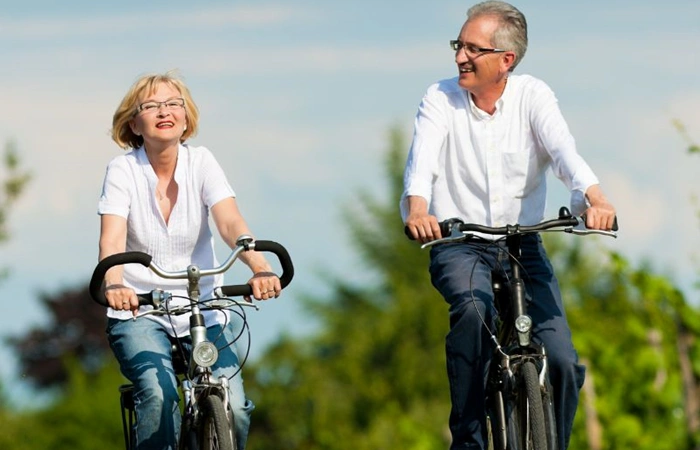
#4 Pilates
Pilates is an effective workout for weight loss at home and toning the muscle for these reasons:
Engages Core Muscles for a Strong Foundation
Pilates focuses on developing a strong core, which is the foundation for all movements.
By targeting deep abdominal muscles, back muscles, and the pelvic floor,
Pilates helps improve posture, stability, and balance. As you engage your core throughout the exercises, you’ll strengthen these muscles and burn calories, contributing to weight loss.
Builds Lean Muscle Mass
Contrary to popular belief, Pilates is not just about stretching and flexibility; it also helps build lean muscle mass.
The controlled and precise movements in Pilates target specific muscle groups, creating long, lean, and toned muscles.
Increasing your muscle mass improves your body’s metabolic rate, resulting in increased calorie burn even at rest. This metabolic boost aids in weight loss and enhances overall body composition.
Full-Body Workout
One of the great advantages of Pilates is that it provides a full-body workout. While certain exercises primarily focus on specific muscle groups, the entire Pilates engages multiple muscles simultaneously.
This means you can effectively work your arms, legs, glutes, back, and core all in one session.
By incorporating various exercises and equipment, such as the reformer or stability ball, Pilates keeps your body challenged and prevents plateauing, leading to continued progress and better weight loss outcomes.
Key Pilates exercises to target core strength and muscle definition
The Hundred
This is done by pumping the arms up and down 100 times. It strengthens your core and improves endurance.
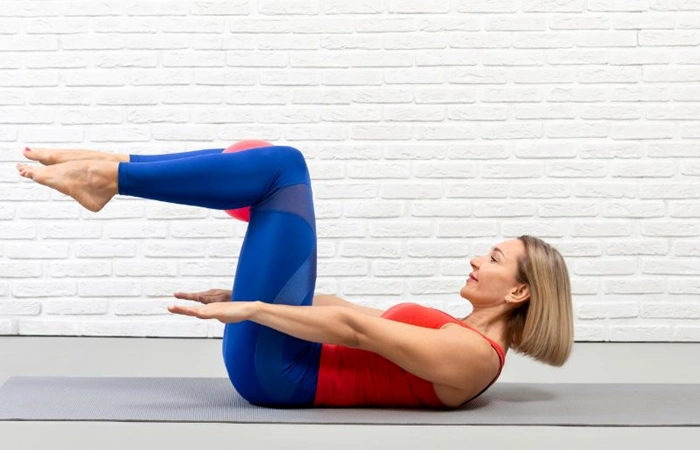
Plank
The plank is an essential exercise for core strength and muscle definition.
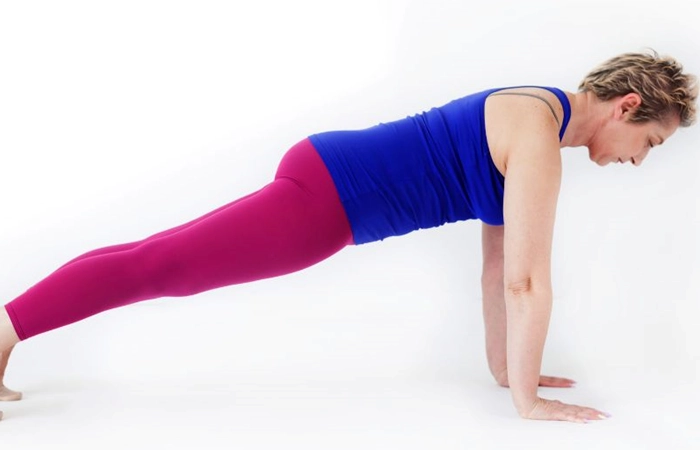
Pilates Bridge
This exercise targets the glutes, hamstrings, and core.
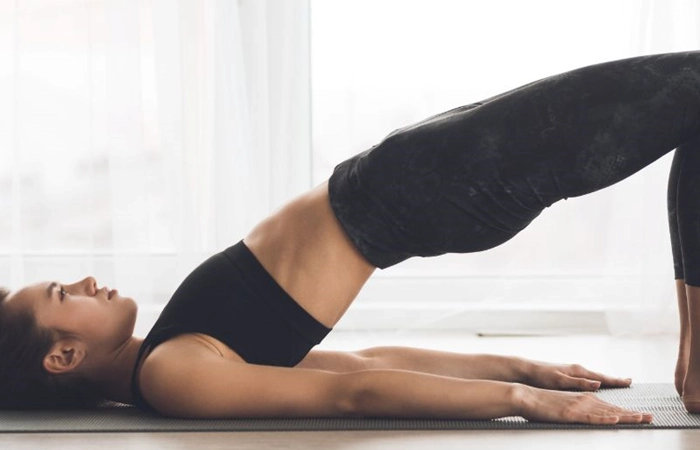
Side Plank with Leg Lift
This exercise not only strengthens the core but also engages the obliques and hip muscles.
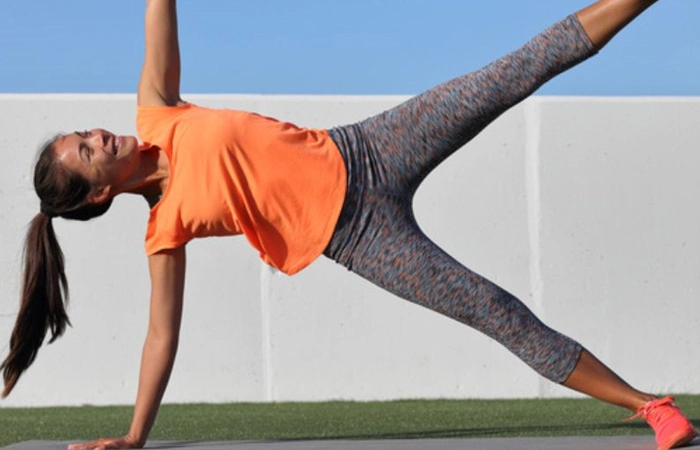
Pilates Teaser
The Pilates Teaser is an advanced exercise that challenges the core muscles and improves overall body control.
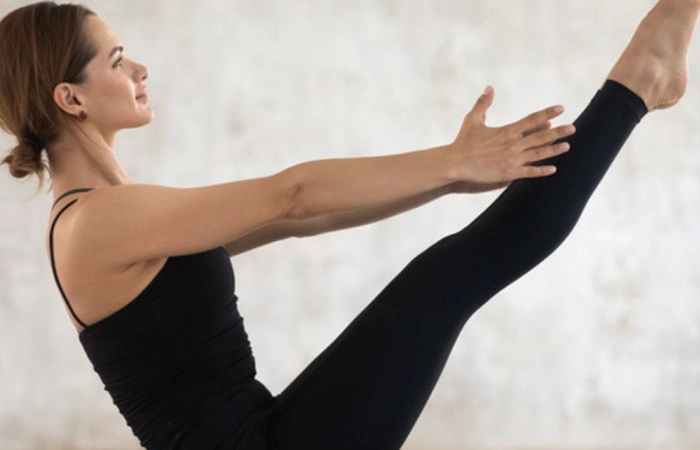
#5 Yoga
Yoga is usually associated with relaxation and flexibility, but it can also be an effective workout for weight loss and muscle toning. Here’s how:
Mindful Movement and Increased Calorie Burn
Unlike intense cardio or high-impact workouts, yoga offers a unique blend of gentle movements and mindfulness that harmonizes your body and breath.
Through a series of flowing poses and controlled transitions, yoga engages multiple muscle groups, increases heart rate, and stimulates metabolism, leading to calorie burning.
Building Lean Muscle Mass
Various yoga postures, such as plank, warrior poses, and balances, challenge your muscles to support and stabilize your body weight.
By holding these poses, you engage your muscles for extended periods, promoting muscle growth and toning.
Boosting Metabolism and Fat Loss
Regular yoga practice helps reduce stress levels, balance hormones, and regulate metabolism.
These can positively impact fat loss, particularly in the abdominal region, where stress-induced weight accumulates.
Balancing Hormones and Managing Cravings
Through breathwork, meditation, and relaxation techniques, yoga helps rebalance your hormone levels, reducing stress and emotional triggers.
As a result, you gain greater control over your eating practices and develop a healthier connection with food.
Muscle toning and strength building
Yoga involves holding various poses that target different muscle groups, leading to toning and strengthening.
Poses like plank, downward-facing dog, and warrior engage the core, arms, shoulders, and legs, promoting muscle development.
Additionally, inversions, such as headstands or handstands, can strengthen the upper body and build core stability.
Low-Impact Workouts and Their Benefits
Joint-friendly
Low-impact exercises are gentle on the joints, making them suitable for people with arthritis, osteoporosis, or joint pain.
They help improve joint flexibility and strength without placing excessive stress on them.
Reduced risk of injury
Low-impact exercises minimize the risk of injuries, such as sprains, strains, or stress fractures.
This makes them ideal for injury recovery or surgery, as they provide a safe and effective way to rebuild strength and endurance.
Better cardiovascular health
Low-impact exercises can still provide a cardiovascular workout while being gentle on the body.
Engaging in activities like swimming or using a rowing machine increases heart rate, improves blood circulation, and strengthens the cardiovascular system without putting excessive strain on the heart.
Weight management
Regular participation in low-impact exercises can aid in weight management.
These exercises burn calories and help maintain a healthy weight, making them suitable for individuals who want to stay active and fit without putting too much stress on their bodies.
Improved mental well-being
Engaging in any form of exercise releases endorphins, also known as “feel-good” hormones, which can boost mood and reduce stress, anxiety, and depression.
Low-impact exercises provide a means of staying active and achieving these mental health benefits, even for individuals who may have physical limitations or mobility challenges.
Low-Impact Workouts Are for All Fitness Levels
Low-impact workouts are suitable for all fitness levels for these reasons.
● Low-impact exercises place less stress on the joints and reduce the risk of injury.
This makes them an excellent option for individuals who may have joint issues, such as arthritis or previous injuries.
For example, someone recovering from knee surgery may find low-impact exercises like swimming or cycling beneficial as they provide cardiovascular benefits without putting too much strain on the healing joint.
● Low-impact workouts allow beginners or individuals with lower fitness levels to start exercising without feeling overwhelmed.
Low-impact exercises offer a more gradual and less demanding approach, allowing individuals to build strength, endurance, and confidence at their own pace.
● Low-impact workouts provide a gentler introduction to exercise, allowing individuals to gradually build up their stamina and strength.
For instance, someone who is new to exercise may choose to start with low-impact exercises like walking or yoga before progressing to more intense activities.
● Low-impact workouts can be easily modified to suit individual fitness levels and goals.
For example, exercises like squats or lunges can be modified to be low-impact by performing them with lighter weights or by using resistance bands instead.
This adaptability allows individuals of all fitness levels to participate in the same workout, making it more inclusive and accessible.
● While they may not be as intense as high-impact exercises, they can still improve cardiovascular health, increase muscle tone, and help with weight management.
For example, swimming, a low-impact exercise, is an excellent way to improve cardiovascular fitness, burn calories and strengthen muscles without putting stress on the joints.
Addressing misconceptions about low-impact exercises
Misconception 1 – Low-impact exercises are not effective enough.
Contrary to popular belief, low-impact exercises can yield outstanding results.
The notion that fitness achievements are exclusively tied to intense, high-impact activities is simply untrue.
Walking, swimming, yoga, and cycling are low-impact exercises that can significantly improve cardiovascular health, increase strength and flexibility, and even aid in weight loss.
The key lies in consistency and finding activities that suit your body and goals.
Misconception 2 – Low-impact exercises are only for the elderly or injured.
It’s time to challenge the perception that low-impact exercises are exclusively reserved for specific age groups or those with physical limitations.
Low-impact workouts can be a gateway to building a strong foundation, preventing injuries, and complementing high-intensity activities by promoting active recovery of all ages and fitness levels.
Misconception 3 – Low-impact exercises are boring and lack variety.
Let’s banish the idea that low-impact exercises are monotonous and uninspiring.
On the contrary, there is an abundance of diverse activities that fall under the low-impact category.
From dance-inspired workouts and Pilates to tai chi and hiking, there is something for everyone to enjoy.
Additionally, many low-impact exercises can be modified or combined with other activities to add more challenge and variety, keeping you engaged and motivated on your fitness journey.
Misconception 4 – Low-impact exercises do not provide a sufficient calorie burn.
While low-impact exercises may not burn calories as rapidly as high-intensity workouts, they can still contribute to weight loss and overall fitness.
These exercises help increase your metabolic rate, improve muscle tone, and build endurance, leading to long-term benefits.
Moreover, low-impact activities are often more sustainable, allowing you to engage in them for longer durations, which can ultimately result in higher calorie expenditure.
Conclusion
Embarking on a fitness journey towards effective weight loss and muscle toning can seem overwhelming, but rest assured that fantastic low-impact workouts are available to help you achieve your goals.
The top five options we’ve explored today offer a perfect blend of effectiveness, safety, and accessibility.
Whether you choose swimming, cycling, yoga, Pilates, or walking, you’re taking a significant step towards a healthier, fitter, and stronger you.
This exercise provides a gentle yet powerful approach to burning calories, sculpting muscles, and improving overall fitness without placing excessive strain on your joints.
So, lace up your sneakers or roll out your yoga mat.
Begin your journey towards effective weight loss and muscle toning with these low-impact workouts, knowing that you have the power to transform your body and your life.
Keep going and enjoy the incredible benefits that await you on this fitness adventure!
Author Bio
 Rick Kaselj is a highly respected health and fitness expert with over Twenty years of experience.
Rick Kaselj is a highly respected health and fitness expert with over Twenty years of experience.
He founded ExercisesforInjuries.com, OliviaDiet.com, Gentlestretching.net, Lifelongwellness.org, and HealthNewsDay.com, where he provides valuable resources on fitness, injury prevention, and healthy eating.
Rick’s unique approach to fitness emphasizes targeted exercises and proper form, promoting long-term health and injury prevention.
His expertise is showcased in his numerous books and training programs, which have helped countless individuals improve their physical health and well-being.
Rick’s dedication to helping people achieve their health goals has received him a reputation as a trusted authority in the industry.
Social:
FB – https://www.facebook.com/oliviadietcom
YT- https://www.youtube.com/exercisesforinjuries
Twitter – https://twitter.com/OliviaDiet
IG – https://www.instagram.com/exercisesforinjuries/

